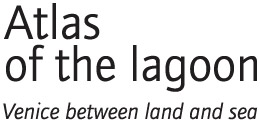
|
|
Geomorphology:
from the Greek geo (Earth), morphé (shape), logos (study), study of the forms of the Earth’s surface, considering their origin and evolution. Geographical Information System (GIS): a complex system comprising hardware, software, human beings and intellectual resources, which is used to acquire, process, analyse, store and present (in graphic and alphanumerical format) geographical data. In the digital version of a traditional map, the position and the description of the elements are memorised in a series of files on a computer. In most cases, the memorisation of the geographical elements uses coordinates from the real world: these coordinates represent a real location on the surface of the Earth, in one of the many systems of coordinates. The relations between geographical elements are expressed, on a digital map, with the use of topology. The characteristics of the geographical elements are memorised in the computer in a file, generally called a table, as a set of numbers and characters. A typical application of GISs is to support decision-making in the context of planning, territorial policy and sustainable development. Ghebo: small winding channel cutting across the saltmarshes and mudflats, linking the innermost areas of the Lagoon with the deeper channels. Granulometry, grain size: a measure of the dimensions of the grains of an aggregate or incoherent blend of materials. In geology, the distribution of the dimensions of the grains of a sediment or soil. Cf. Plates 8 and 9. Groundwater: water that has entered the subsoil via percolation through layers of permeable rock. The groundwater is said to be confined (piezometric) if trapped between two impermeable layers, and unconfined (phreatic) if situated above the highest layer of impermeable rock. Guild: group of organisms with similar ecological functions. In the case of feeding, we find for example the trophic groups of detritivores, filterfeeders etc. Habitat: environment in which a given species can be found. By extension, the environment in which an organism lives. It may also refer to a community of living organisms. Halophile: species which lives in saline or brackish environments. Halophyte: terrestrial plant that lives in terrain that is rich in salt. Herpetofauna: a category of fauna including amphibians and reptiles. Cf. Plate 43. Heterotrophic: of an organism, which feeds on other organisms or on organic matter. Histosols: soils that are saturated with water and characterised by a high organic matter content. Cf. Plate 13. Holocene: final phase of the Neozoic geological epoch, beginning about 10,000 years ago. Hydrodynamic confinement: characteristic feature of aquatic transitional environments, defined as the turnover (replacement) time of the waters in a given area of a water body. Hygrophile: referring to the organisms, communities or ecosystems of wet or extremely humid environments. |